It's Asteraceae Time!!
Sunday, September 29, 2019
No sooner it seems than I finished my massive News Item for
August, here I am again in the small hours composing the September
edition with just 13 days to go at the time of writing to the month
end. With seemingly! less to write about than last month I was
concerned that it would be difficult to find a Headline, which I
have mentioned before is the key to me getting off to a good start.
Fortunately a visit to a Cook Shop last month came to the rescue.
There were the usual range of items for sale, including teatowels,
aprons, T shirts etc. singing the praises of Prosecco time! Whilst
I like a drop of the bubbly, I like plants even more! so I decided
to use plants as the paean of my praise. Hence the headline to this
months news.
The asteraceae (daisy relatives) in the title is the largest
family of plants in the plant kingdom, dwarfing orchids and the pea
family (Fabaceae). At this time of year many are at their peak and
what a choice there is, some unexpected and familiar garden plants
among them. The gardens here are no exception and many
in the family are showcased later on. The genus aster which gives
its name to the family is a stalwart of autumn although this
year they were slower to flower than usual to start with, but
are now reaching their prime, and the butterflies and bees just
love it.
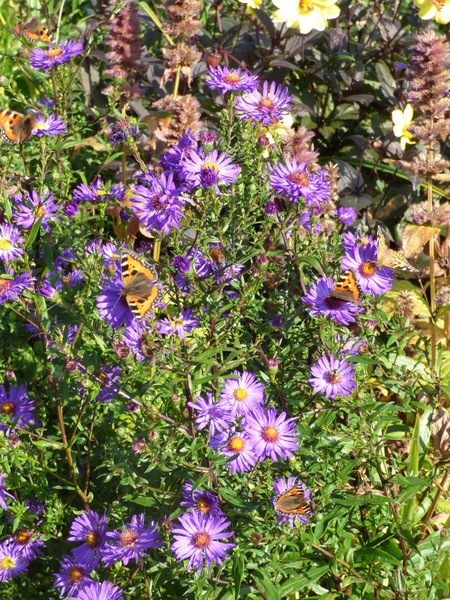
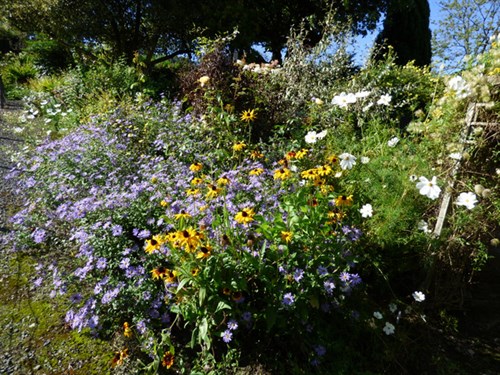
Weather
A month of mixed weather which included a delightful taste
of an indian summer with 6 continuously warm sunny days
10 Sun Days max 25C on 21st. Min 3C on 8th and 3 other days of
5C
7 Rain days with 4.6" rain. Wettest day1.2" on 26th which
included thunder and lightning
7 Changeable days
6 Days not recorded because of our absences
Garden update
The lack of any episodes of severe weather has ensured that all
parts of the gardens look as good as they did at the end of last
month.
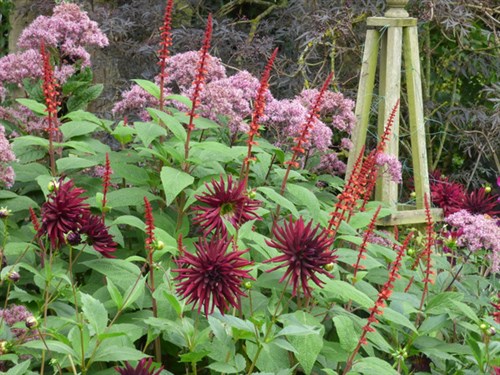
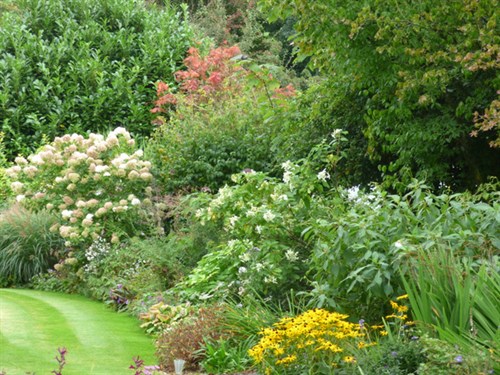
You always wonder with October in the offing how much longer
this happy state of affairs will continue, so you want to make as
much of it as you can before the first real frosts arrive along
with severe gales and heavy rain, and the dreaded forecast of a
named storm! I feel like this more than ever as I approach my 4th
year of living with a terminal illness. I have however been lucky
so far to have had the chance of living a relatively normal life
which has featured as many of the tasks as I can do in the gardens
which, along with Moira have been my salvation. So it is normal for
me to be contemplating all the jobs that need to be done into
the developing autumn.
A last cut of the hedges is due and especially our beloved Yew
Tree which has been shaped over the years from a straggly untidy
thing when I first moved here. With so many herbaceous plants
around it I can only start to do this when they begin to fade.
Lawn cutting and the ancillary clipping of the edges
continues at the rate of a cut every 2 to 3 days, weather
permitting. Towards the end of the month I had already commenced
feeding the lawns with specially formulated autumn and winter lawn
feed which keeps the lawns green and in a good condition.
This will be repeated at several monthly intervals.
Dead heading flowers is essential to keep the show going for as
long as possible, most of which is done by Moira, who never misses
much!
Unusual flowers on rosa "Nostalgie"
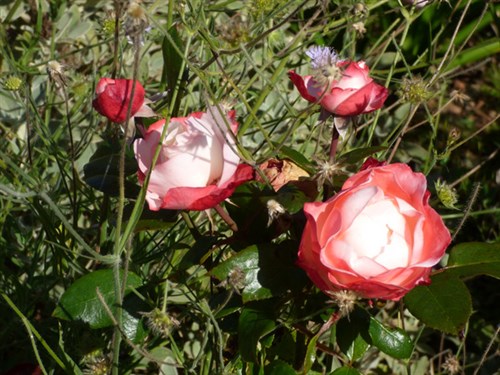
Now however I have reduced this so that seed pods can develop
and ripen to start collecting seed as I do every year, fo feed into
The Hardy Plant Society Seed Exchange for members which we have
participated in for the 25 years or so that we have been
members.
We continue to be thrilled by the quality and abundance of the
vegetables in the gardens, brassicas better than for many years,
runner beans still cropping thanks to my regime of successional
sowing to avoid gluts. "White Lady" is always a tender bean that
can be relied upon. All the other pulses have now finished but
there are plenty of peas in the freezer for later.
The largest cauli this year
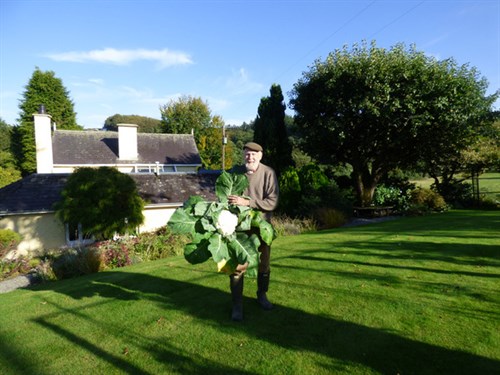
Part of the former fruit cage filled with brassicas
including several forms of curly kale
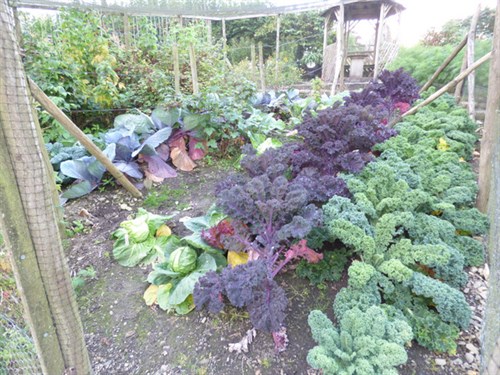
A few of the "Autumn Bliss" raspberries left
behind from when I cleared it to plant the brassicas
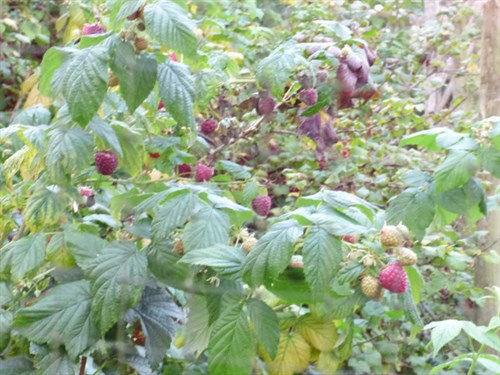
Some of the perfect sweetcorn we continue to
harvest from successional sowings variety "Swift"
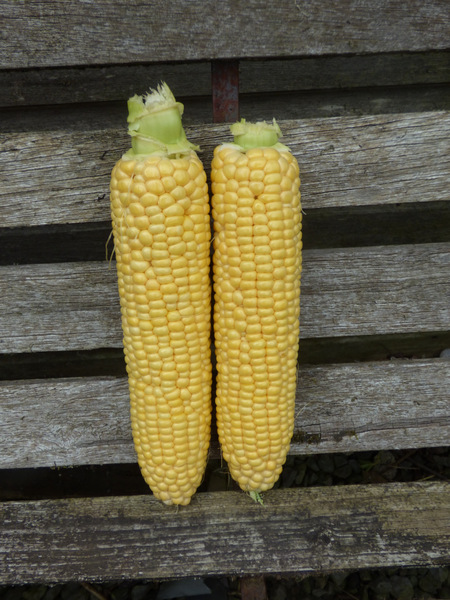
Ready for soup making by Moira
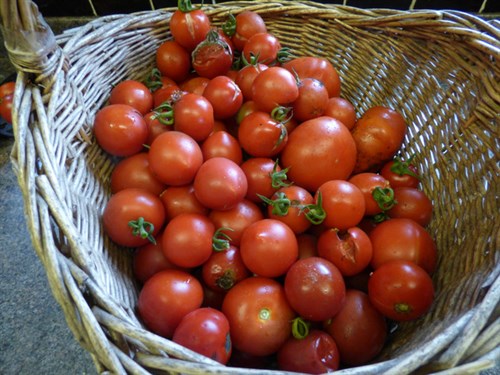
Root crops with the exception of parsnips that stay in the
ground all winter, will all be dug for storage in the
next few weeks, and if there is any sign of frost the mature
celeriac will have the tops cut off and those tasty roots prepared
for storage- up to as late as April!
Parsnip "White Gem"
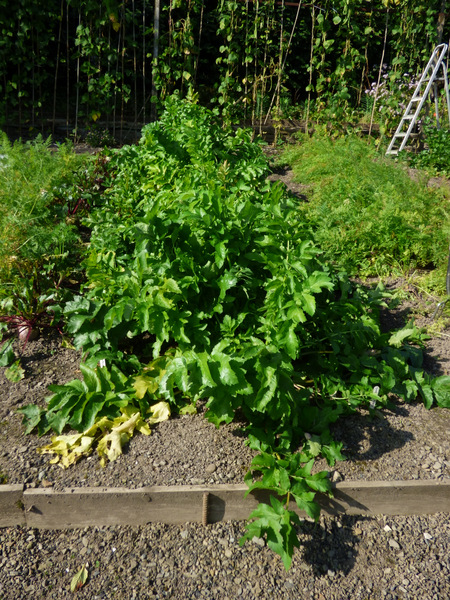
Celeriac "Monarch"
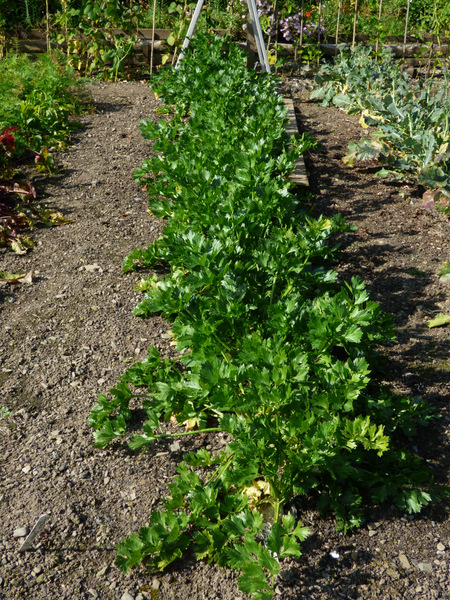
After those pics last month of terrible carrots,
"Sugarsnax 54" has put on a better show!
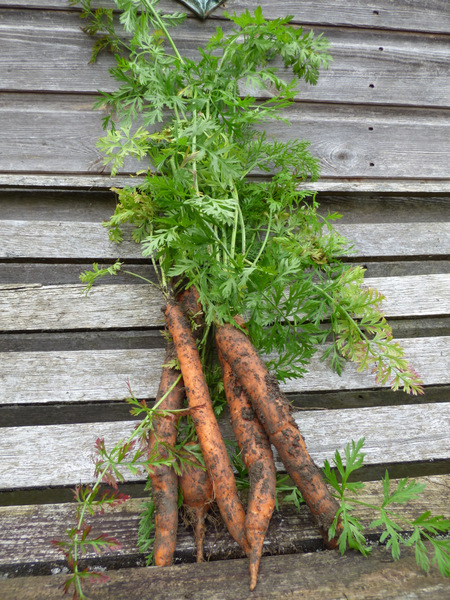
I mentioned in last months News that I had for the first time
made a very late sowing of carrots and dwarf beans in July,
as other crops were cleared, and they have made wonderful progress.
It still remains to be seen with crossed fingers whether there will
be any harvest.
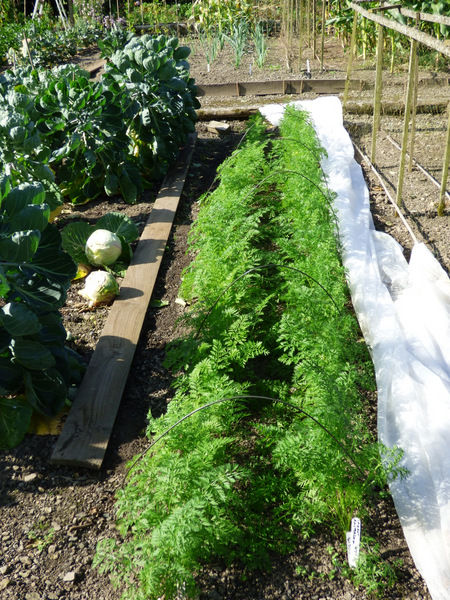
I have still continued to make small sowings of salad leaves
under fleece to take us into late autumn which is when horti.
fleece comes into its own.
What is/ was looking good?
A lovely composition of white viola cornuta with
the 5 foot tall Kirengeshoma palmata.
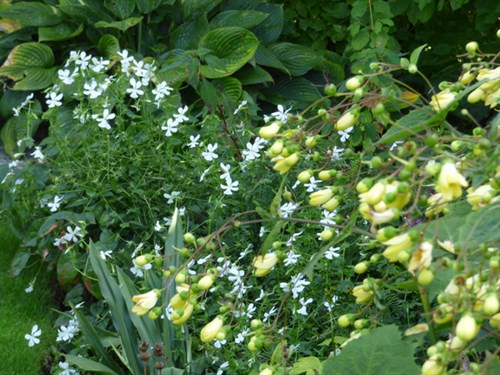
White Japanese anemone with a terrific very tall
sanguisorba of which sadly I have lost the name with aLong season
of flowering. More research necessary to establish the
name
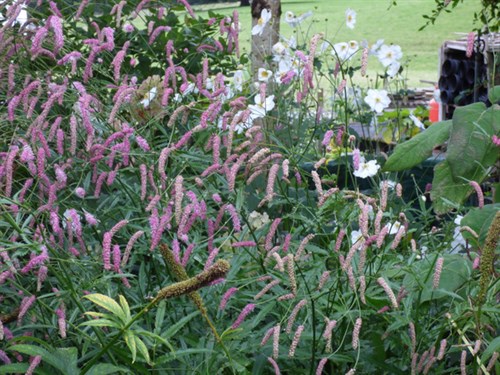
Bottlebrush flowers of actea "Brunette" set off by the
pink flowers of alstroemeria "Summer Saint" in the
foreground
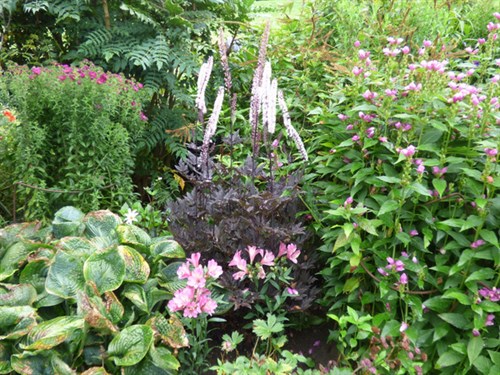
Seed grown single dahlia with deep red salvia
"Jezebel"
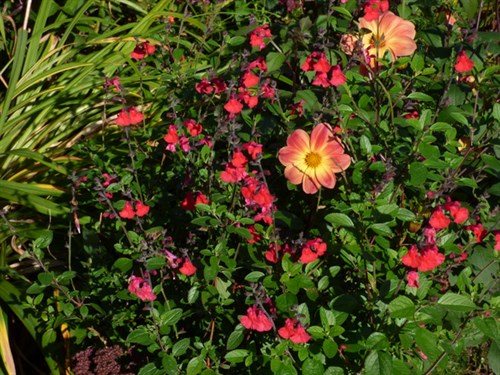
Salvia "Amistad" meaning Friendship- a superb tall
deep blue
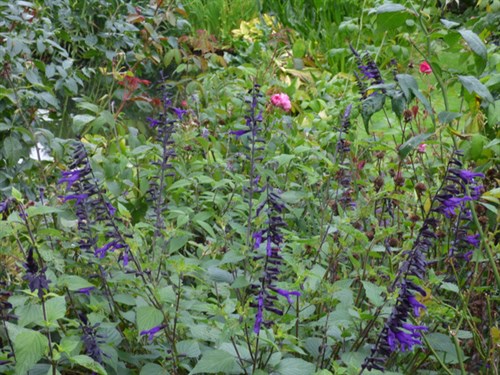
salvia "Pink Lips"
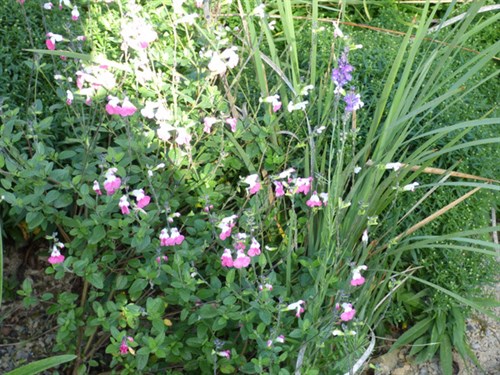
Salvia "Love and Wishes"
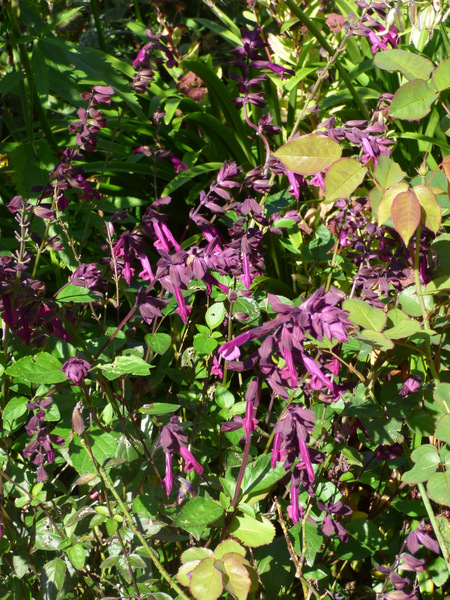
Sedum now called hylotelephium planted with
blue ageratum petiolatum. A hardy perennial form of the ever
popular annual bedding plant but much nicer!
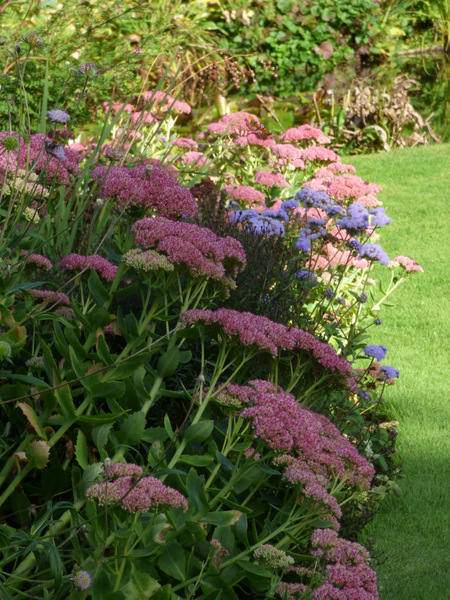
Colchicum
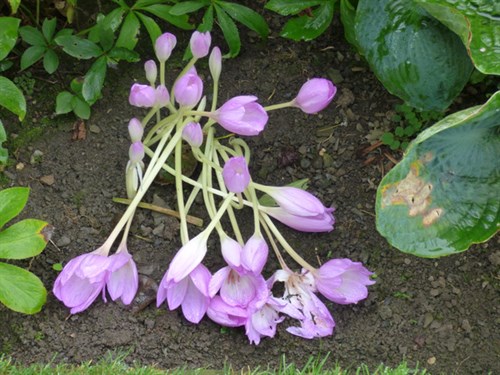
And a delicate white form which is more resistant
to the vagaries of autumn weather, well supported by its border
colleagues
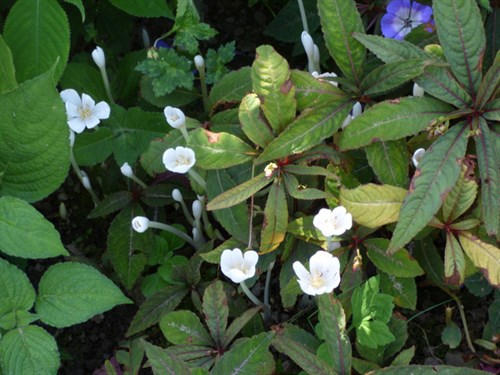
Cyclamen hederifolium much later to flower than
usual
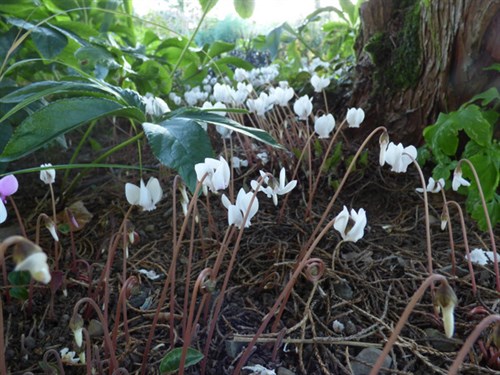
Nerine amongst sedums
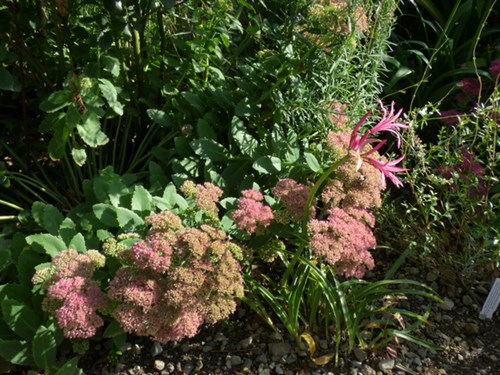
Flowering from a huge division made last May by our
friend Tony; is Crinum powellii
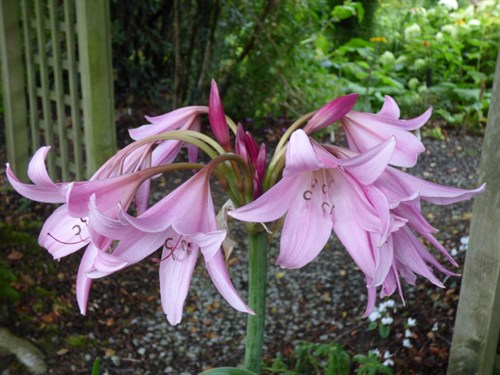
A few smaller shrubs of interest at this time of
year:-
Abies grandiflora. Flowers all through summer and
autumn
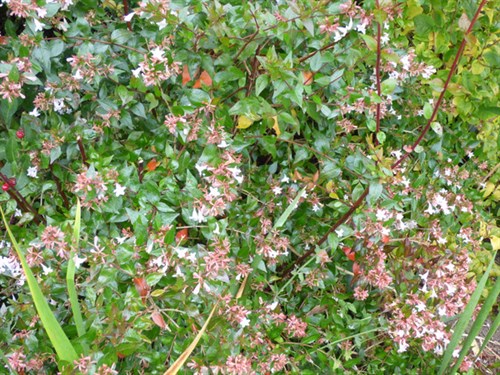
Diervilla "Butterfly" This honeysuckle family member has
a long season of interest but sadly not much scent. Flowers early
summer and lovely bronze leaves into autumn.
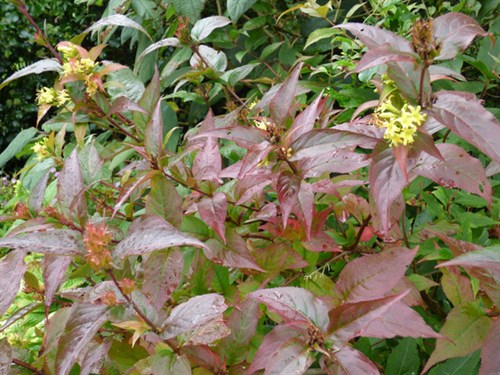
Lonicera "Honeybush", a non climbing form, with lightly
scented flowers and red berries into autumn
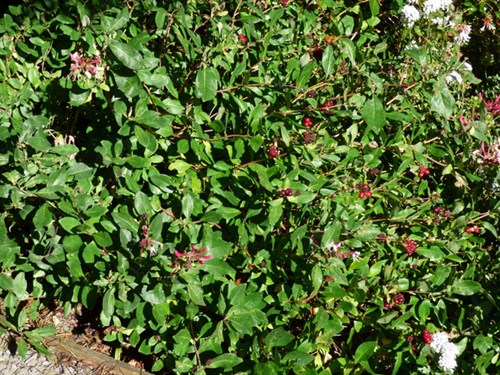
It is harder to ignore the larger shrubs like
Hydrangea paniculata "Vanille Fraise" in all it's autumn
finery.
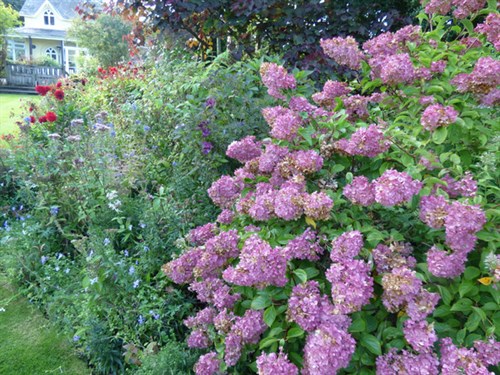
Hydrangea aspera "Mauvette" What a recovery
from that late May frost!
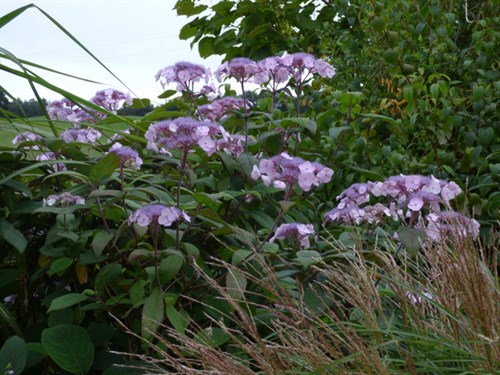
Hydrangea aspera macropylla
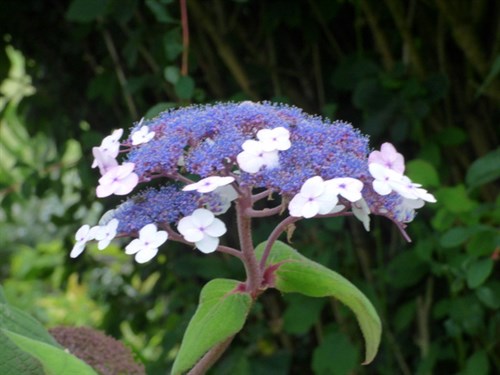
Having given them the top billing, members of the
asteraceae deserve of course a substantial mention, but there are
so many there is not the space to include them all!
In recent years some asters have been re-
classified. Species and hybrids native to America are now
known as symphiotricum. The 2 main forms in this group are still
known as New York (novi belgii) asters, and New England
(novae-angliae) asters. In some ways it might be easier and less
cnfusing to call all of the genus Michaelmass Daisies as they
always used to be known!
One of my favourites is "Marie Ballard" a New
York form
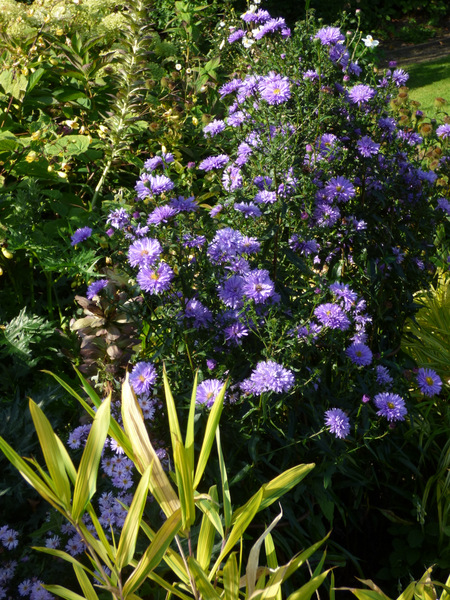
And this is an unknown New England
form
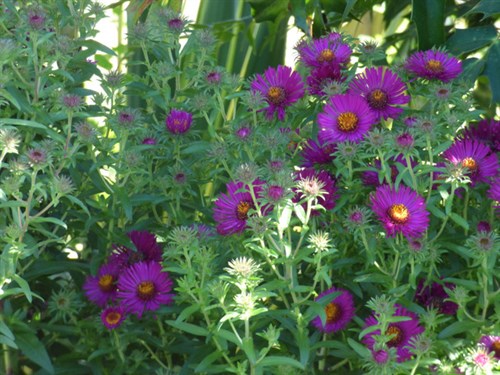
Aster divaricatus which after another name
change is now called Eurybia. Valuable plant for a shady
spot
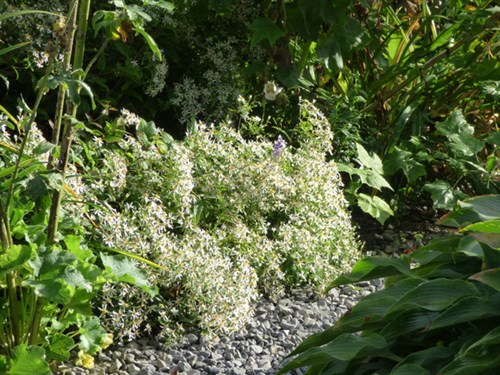
Looking like an aster but this is another relative
called kalimeris. A real tough and long flowering
plant
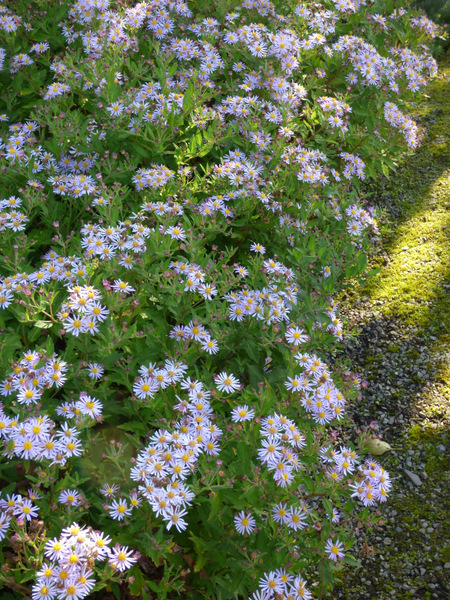
Looking nothing like an aster but of the same
family is Senecio candidans "Angel Wings" In the 2 years we have
grown it we we have never seen it flower! Lovely foliage
though.
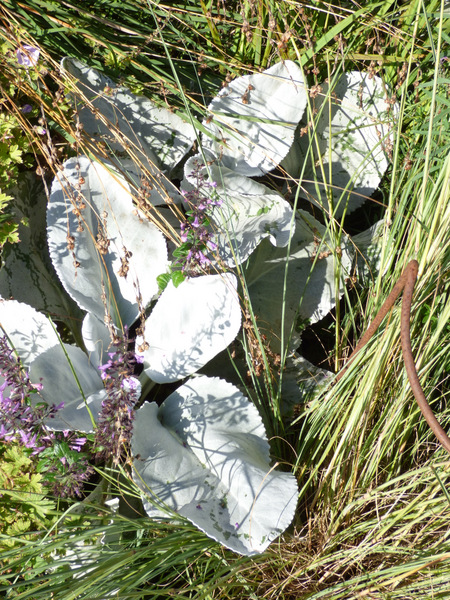
Sinacalia tangutica. The infloresence doesn't look
much like an aster but each individual floret does when viewed
close up
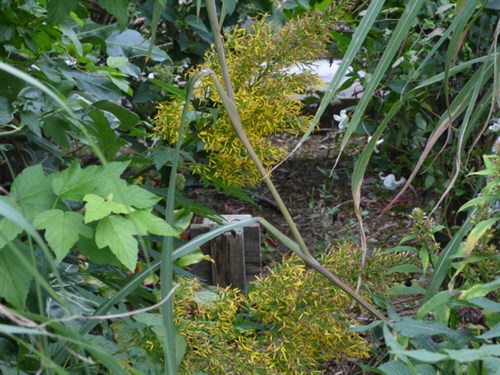
Achillea "Cloth of Gold"
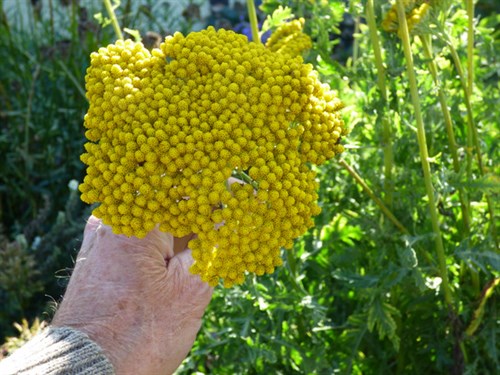
Vernonia gigantea with deep purple buds just
opening into aster like flowers
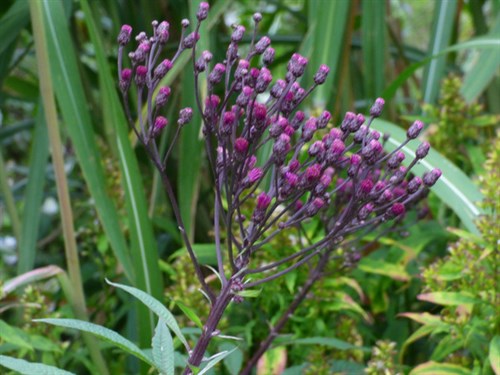
Cosmos are archetypal daisies
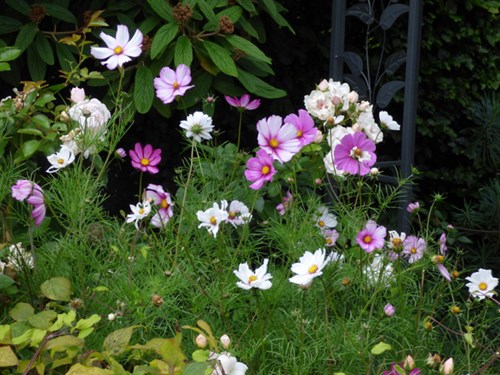
As are echinacea
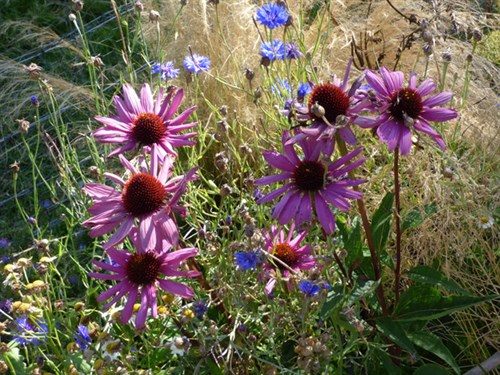
No introduction necessary!
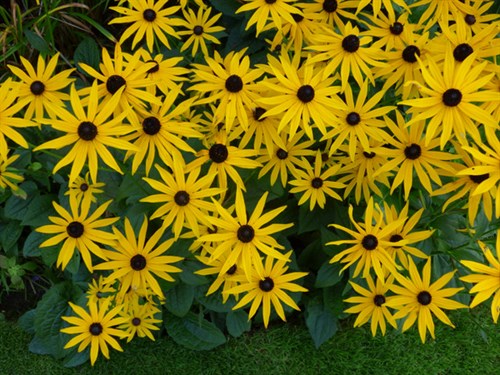
Helianthus "Lemon Queen"
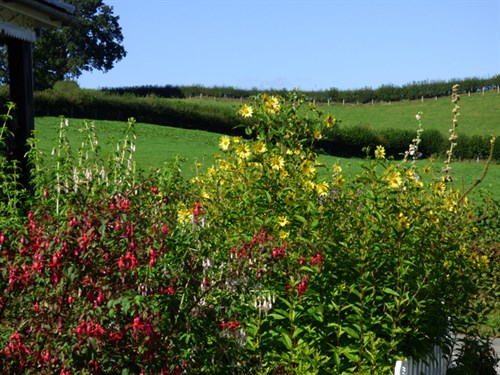
Bidens "Hannay's Lemon Drop"
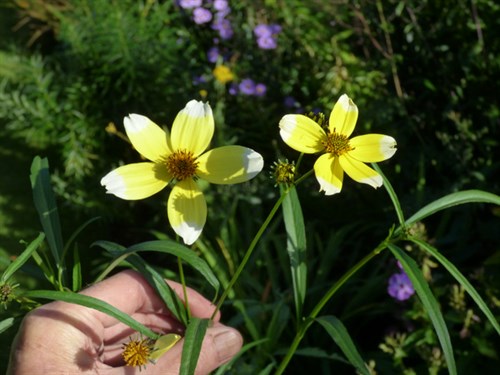
Pale pink aster "Anita Webb" blending beautifully
with astrantia "Ruby Star"
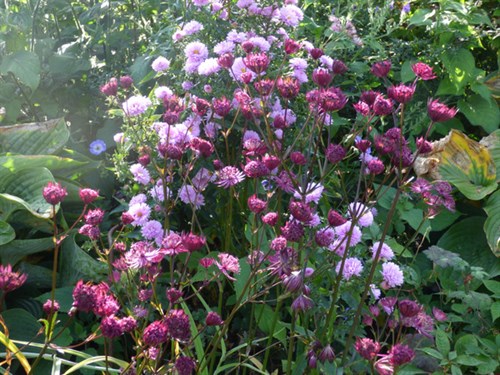
Countryside and Wildlife
Butterflies continued to swarm everywhere with all open flowers
attracting all kinds of polinating insects. Most of the
common species of butterflies seen with the exception of
Commas.
"Tortoiseshells were the most common towards the month end
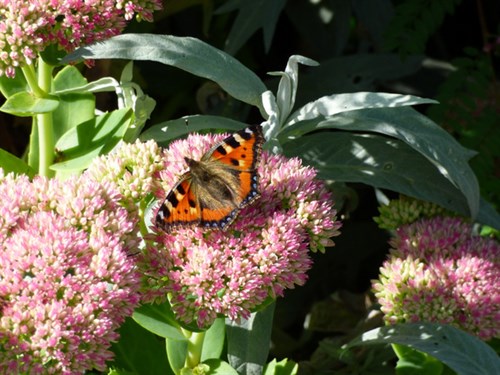
The last "Painted Lady" I saw. sharing the
flowerhead with a " Tortoiseshell"
Not being sure what happens to mature migratory
butterflies when the breeding season ends, Google came to the
rescue. Painted Ladies like this one die. Their offspring however
fly back to the wintering grounds in N. Africa, the middle east or
central Europe a journey in some cases of 7,000 miles! Some may
breed there and their progeny will fly back to the UK and the whole
cycle begins again. Painted Ladies are found on every continent
except Australia and Antartica ( not surprisingly!)
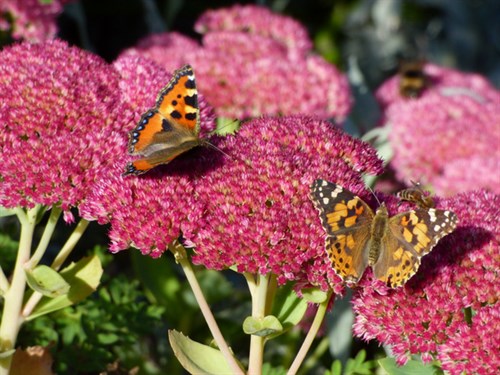
An unexpected find under the staging in the the large tunnel was
a recently dead pipistrelle bat. They used to be very common here
as as we had a colony roosting in the roof of the Lodge but
we rarely see them now. I got used to handling them when they flew
into the bedroom on hot summer nights! Causing Moira much
consternation and exciting the 2 cats we had then that used to
chase them around the room!
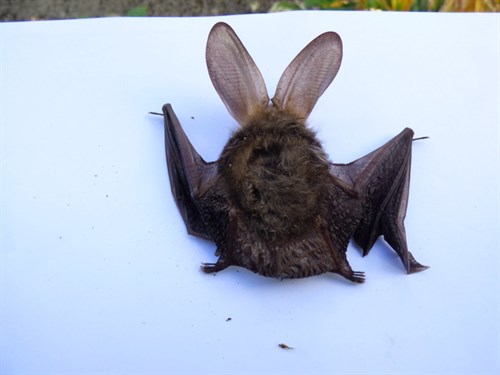
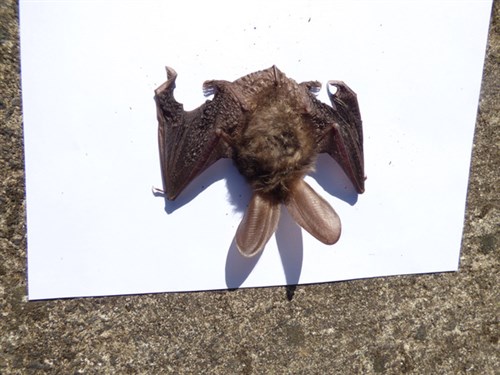
Native Hawthorn berries of which there are masses
this year
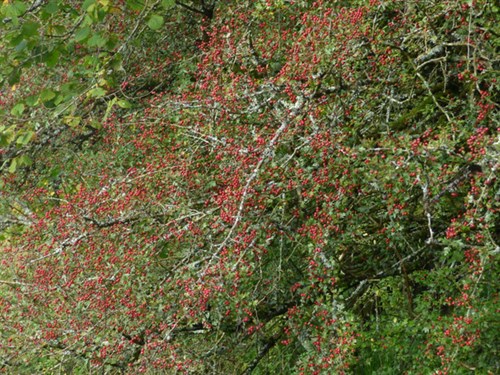
Rosa Glauca covered in hips at the back of the Paddock
Garden.
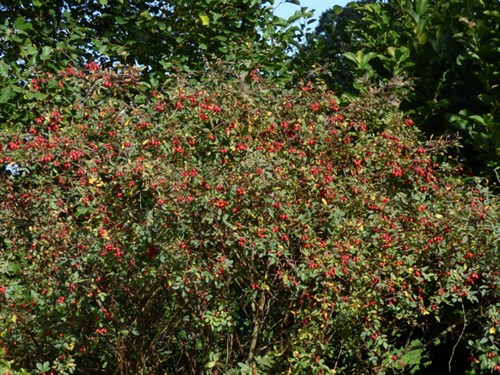
Plenty of berries on hawthorns and ornamental shrubs was nice,
but most eciting of all was a good crop of hazel nuts
untouched by squirrels for the first time in years. We haven't seen
squirrels for a long time which was a bonus alongside no rabbits
this year.
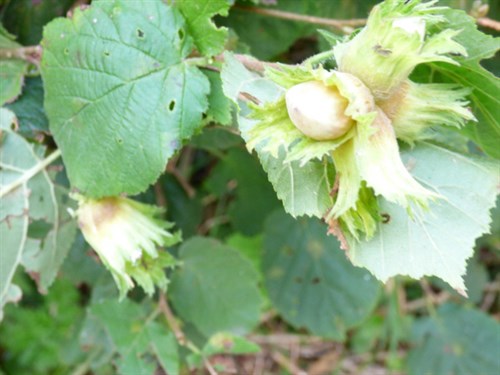
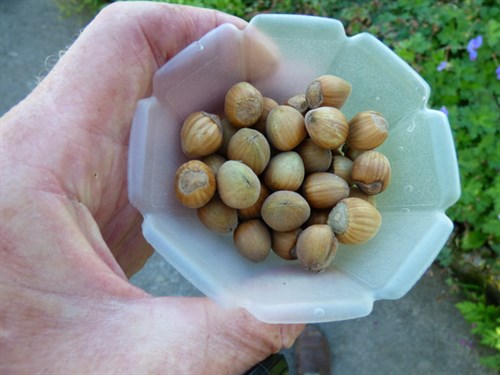
Then ever chaging cycle of life on local farms continues with
the rams now in the fields with the ewes.
Whatever the uncertainties of Brexit, farmers have no choice but
to press on with the production of lambs in the hope that there
will still be a market for them.
Hedge trimming or trashing is now in full swing. Few hedges are
laid in the traditional way these days as mechanical methods are
less time consuming and produce a good tight hedge until the
bottoms start to go.
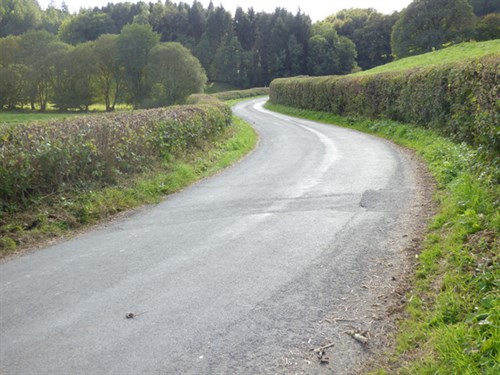
Visits
Always a memorable day out is a trip to Llwyngarreg,
Llanfallteg, owned by great gardeners and good friends Liz and Paul
O'Neil. There is interest throughout the opening season even up to
the closing date towards the end of October. We cannot recommend
too highly a visit at any time. See www.llwyngarreg.co.uk
for more info and visiting arrangements.
The pictures reflect all the vision and hard work
Liz and Paul have put into the 3 acre garden since converting it
from fields for agriculture
Nowhere illustrates this better than the sunken garden
which was all dug out by hand and copious quantaties of
gravel added as the growing medium. The drainage is
superb.
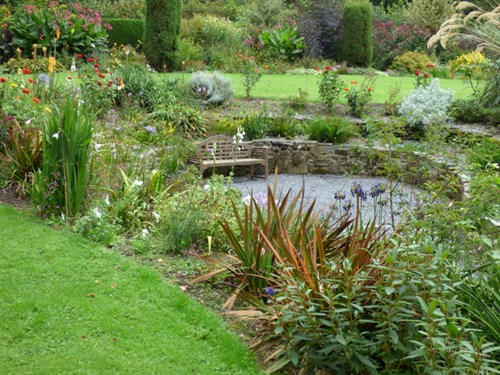
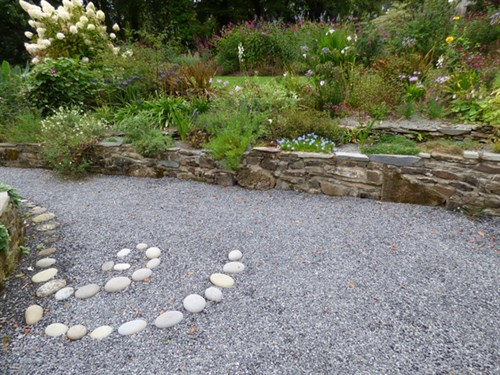
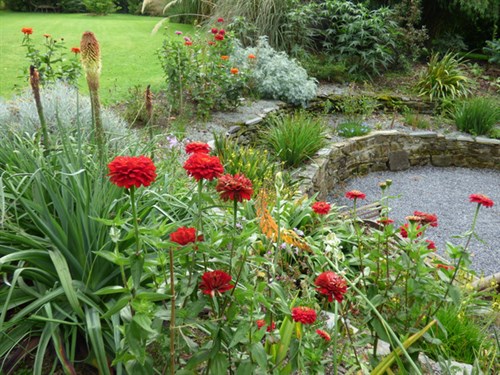
In the wider garden there is a wide selection of
trees shrubs and herbaceous plants on a grand scale. This permanent
planting of Canna ehemanii is typical of the tender plants they can
grow there.
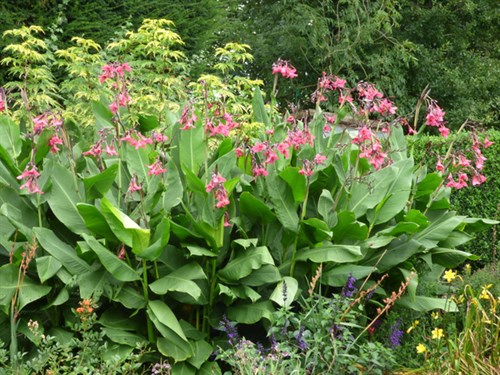
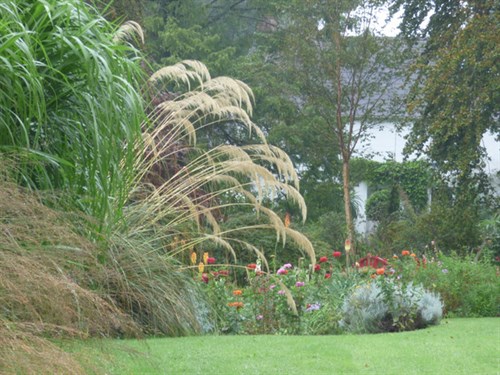
Just behind Moira is a glimpse of the red Japanese
bridge which was installed a year ago. A perfect spot to have your
picture taken, preferably not in the rain!
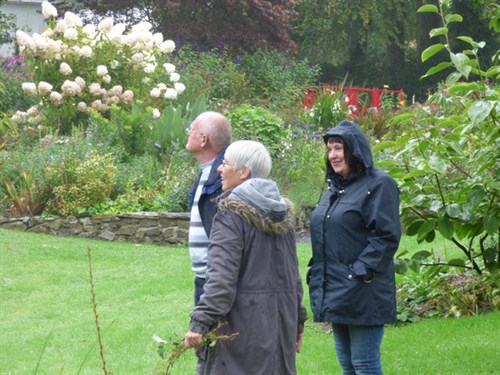
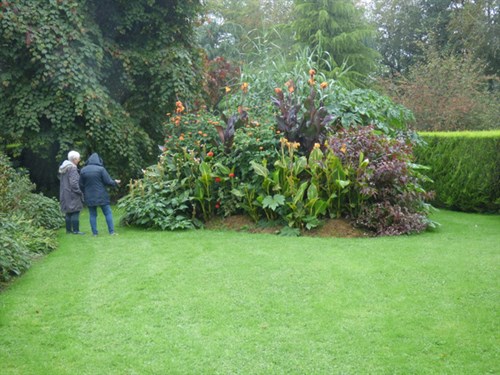
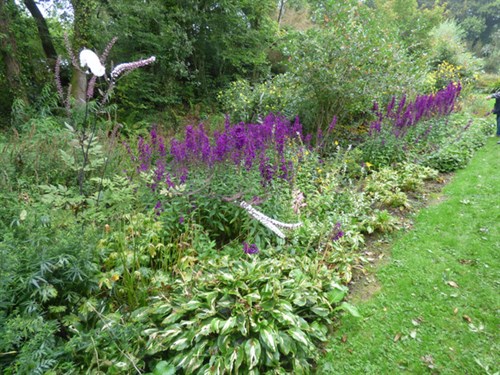
There are large drifts of tall
salvias
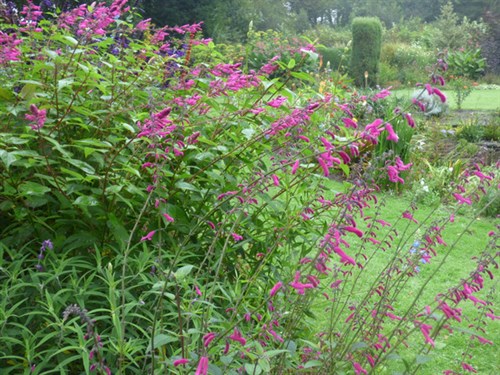
Another tender plant that does well in the stream garden
is a large stand of colocasia far from its tropical
homeland
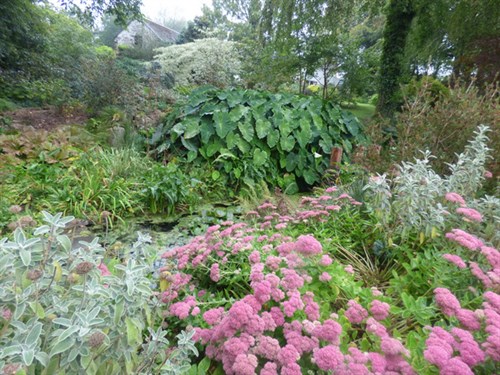
And just when you think the thrills are all done, and
teas to be taken in the Consrvatory, where there is an unbelievable
range of rare and tender plants to admire
None more exciting than the white form of lapageria
rosea
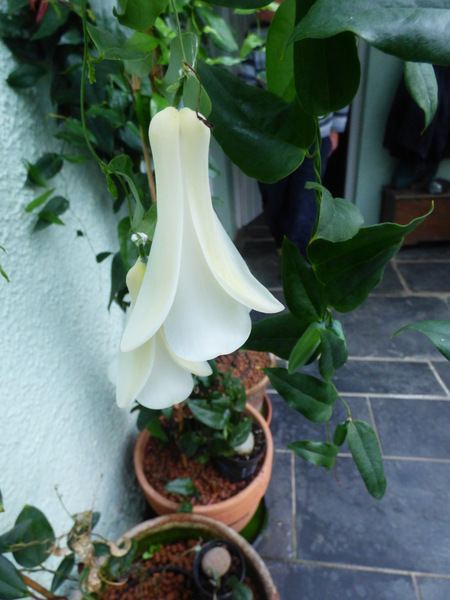
Or this exotic orchid.
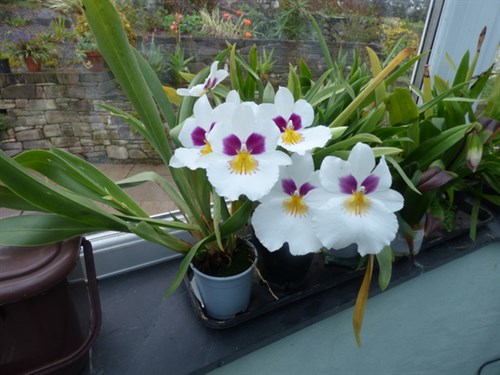
There were other visits in the month but I am carrying these
over to next month's News for all our sakes!! Thanks for
reading.